48 hours in Diego Suarez, Madagascar (Day 1)
I have done more than a fair share of traveling, thanks to my day job. If you asked me, the most exotic country I have visited so far has to be Madagascar. It is that large island east of Africa renowned for a flora and fauna unique from the rest of the world. Think of lemurs, baobabs and chameleons. Madagascar is the fourth largest island in the world but it is pretty much isolated from Africa. Its racial stock is not solely black and is mixed with Indonesian and Polynesian. No wonder too that it has a superstitious culture that could rival Haiti’s voodoo religion.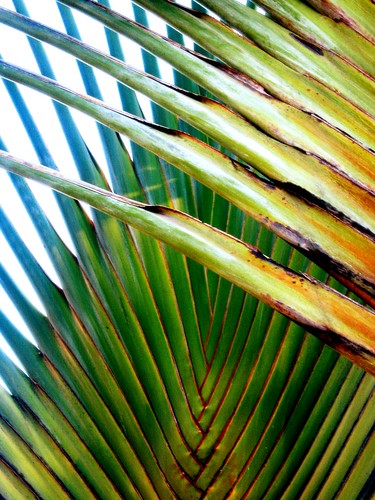
phototip: Look for patterns that are visually pleasing.
Canon PowerShot S40, 0.067s, f/8, 21.3mm
Ravanala madagascariensis, a palm originally from Madagascar now distributed worldwide by horticulturists, shot in Nusa Dua, Bali, Indonesia
getting there
I am based in the Philippines and back in November 2005, the time of my visit, it was difficult getting to Madagascar. There were no direct flights yet from Asia. I had to buy a Nairobi (Kenya) to Antananarivo ticket which I picked up at Dar es Salaam, Tanzania, my first stop of my Africa trip. Nowadays, it is easier as Air Malagasy, in a code share agreement with Thai Airways, already flies between Bangkok and Tana, thanks I hear to the thriving gem trade between the two countries. There are also connections with Johannesburg, Mauritius and of course Paris as Madagascar was a former French colony. Once you are in the capital city of Antananarivo, you can easily get a plane ticket to any destination in the country.
language
Malagasy is the national language. Contrary to rumors, it has no semblance to Bahasa Indonesia. I would find out later that Malagasy is only specifically related to the Maanyan languange so the Indonesian I know gets me nowhere. French is still commonly spoken but English is not.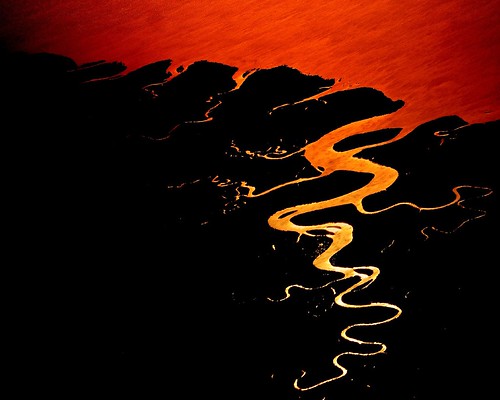
phototip: Before checking into your flight, check the direction of the plane against the map. If you could, get the window seat favorable to the area you want.
Camera: Canon EOS 350D Digital, 0.001s, f/9, 55mm, ISO 100
aerial view of Western Madagascar, East Africa
ariary
The official currency is the Malagasy ariary which was introduced in 2005 to replace the Malagasy franc. The euro is also accepted in most hotels and touristy joints but not the US dollar. Foreign exchange is strictly enforced and limited only in banks. There are some bank counters in the airport so err on the side of safety and change more than what you may need. You don’t want to lose time and queue inside a bank if you run out of ariary.
Tana
The capital Antananarivo, Tana for short, is smacked in the high plateau at the center of the island, about a thousand meter in elevation. It is a bit cold there. I was in the capital for only half a day. My business destination was the Northern regional center of Antsiranana, still popularly called Diego Suarez, which to my delight, offers a distilled rawness of unspoilt beauty that I cxpect from Madagascar.
Upon arriving in Diego Suarez, hire a taxicab. Mer D’Emeraude, or in English, the Emerald Bay, beckons and it is worthwhile first port of call. It is about 20km from the city. The roads may be rough at times but the bay vistas are spectacular.
baobab
Right at the roadside, you will be treated by baobabs. These are strange-looking trees that look upturned by a divine whim of some sort. Its branches look more like roots. Bizarre but beautiful. Looking rather dead, these trees are generally leafless most of the time. Baobabs make me think of trees in illustrated storybooks like The Little Prince. But that is just me. Of the 8 species of baobabs (genus Adansonia), six are found ONLY in Madagascar, with one species endemic to Africa (Adansonia digitata) and one to Australia (Adansonia gibbosa ex. Adansonia gregori). Diego Suarez is quite known to have clusters of these deciduous trees appropriately named “baobab forests”. So when you see any, ask your driver to pull over. The pictures will be worth the stop.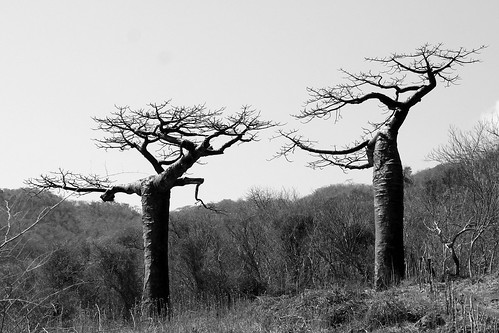
phototip: Black and white works in removing distracting elements and isolating dramatic visuals.
Canon EOS 350D Digital, 0.005s, f/10, 55mm, ISO 100
the Adansonia perrieri or Perrier's Baobab in the French Mountain, Antsiranana (Diego Suarez), Madagascar, East Africa
Emerald Bay
The Bay of Antsiranana is one of largest and most breathtakingly beautiful lagoons in the world. Shaped like a four-petalled flower with a narrow mouth at its eastern tip, it opens into the Indian Ocean. One of the component bays is the Emerald Sea which is famous for its colors of green and blue, thanks to the fine white sand and relatively shallow coast. This island hill called the Sugar Loaf is its fabulous landmark which one can easily photograph by the roadside when approaching the Emerald Sea.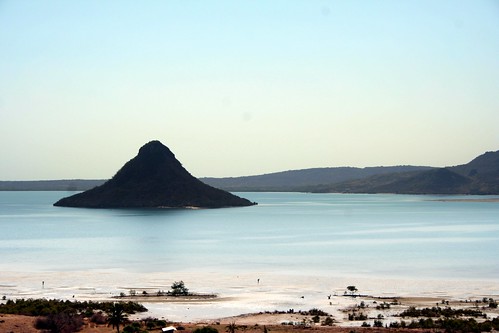
Canon EOS 350D, 0.003s, f/10, 55mm, ISO 100
the Sugar Loaf island taken from a hill by the road leading to Ramena Beach, Diego Suarez, Madagascar
Ramena Beach
There should be several beaches in Emerald Bay, all pristine, wide and most of all EMPTY! Recommended to us was Ramena Beach.
Emerald Bay is just one of 3 enclosed bays in Diego Suarez. It is round shaped, about 20 km in perimeter, shallow in the first few meters- hence the “emerald” appellation and just moderately deep at the center to change the color to turquoise and not blue black. The water all around you are in dazzling hues of greens and blues. No overdelopment. No spas. Just some bed and breakfast cottages and with a few expatriate-owned huts. There were several choices of beach resorts like Cinq Trop Pres and La Casa but a friend picked Hotel Palm Beach for us. It is small, spartan and doubles as a backpacker lodge- perfect place to dump our bags and be assured of a hearty lunch.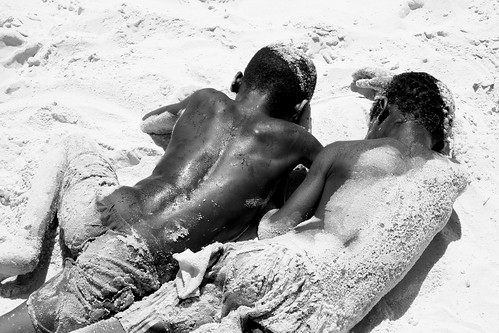
Canon EOS 350D, 0.005s, f/10, 39mm, ISO 100
at the Ramena beach at Mer D’Emeraude, Diego Suarez (Antsiranana), Northeast Madagascar, East Africa
I asked around and found out that public buses are scarce except during Sunday when trips become regular. The endless stretch of white sand is a dream. The scientist in me automatically calculated the fineness of the sand in the beach. Goodness, it must have been like 40 to 60 mesh. And it is white. In the morning that we were there, I chose to skip taking a dip and just practiced with my Rebel camera which was new at that time. Lighting was perfect and the people could not be any more generous with their smiles.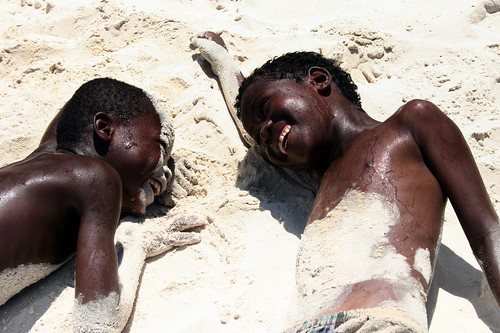
phototip: Smile and be friendly. Kids reciprocate always.
Canon EOS 350D, 0.005s, f/10, 52mm, ISO 100
at the Ramena beach at Mer D’Emeraude, Diego Suarez (Antsiranana), Northeast Madagascar, East Africa
religion
About 45% of the Malagasy are Christians, evenly split into 50 Roman Catholics and Protestants. They constitute the majority of the people living in the capital, in the central highlands of Antananarivo. Asian features are most predominant there too and majority look like Indonesians. However, along the coastal, people are clearly of African origin and are dark-skinned with a mix of Arabic, Pakistani and Comorian blood. They are mostly Muslims. Regardless of faith, majority of them still follow the traditional beliefs of the cult of the dead. Life is regularly guided by various fady taboos.
Diego Suarez is largely Muslim and local mosques provide plenty of local color photo ops. There’s one quantly small mosque right by the beach of Ramena. Don’t miss it.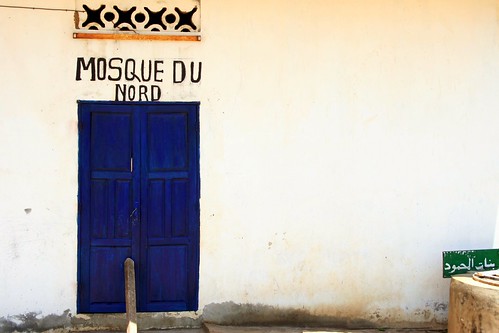
phototip: Simplify the composition to isolate the bright colors amidst plain white walls.
Canon EOS 350D, 0.013s, f/10, 40mm, ISO 100
the Mosque Du Nord, Ramena Beach, Diego Suarez (Antsiranana), Madagascar
Joffreville
In the afternoon, headoff for the mountains. There is a popular national park 30 kilometers south of Diego Suarez- the Montagne d’Ambre or Amber Mountain which has a peak elevation of about 1400 meters. Climate there is cool, quite different from the heat in the parched terrain around the bay. During the French occupation, the town of Joffre was the holiday place of North Madagascar. when the French left, most of the hotels already closed shop. Recently, Joffreville is slowly rebuilding itself as a premier eco-destination.
Joffreville is small. Neglect has taken a toll on the buildings that dot around the town center. The village store appropriately named The Village Store has scant amenities and merchandise. Whatever produce grown and harvested in the village are otherwise displayed in unattended makeshift street stands. There must only be a few hundred people in the village as we did not see a lot of houses along the road. We also only met a few buses plying the route and most places must be traversed mostly by foot.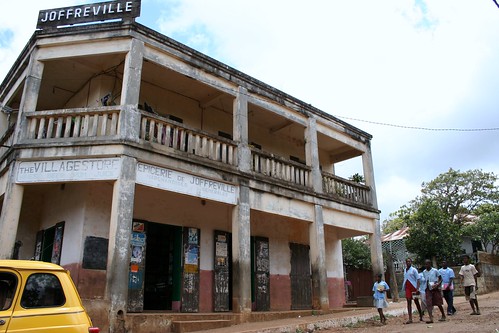
Canon EOS 350D, 0.006s , f/8, 18mm, ISO 100
town center of Joffreville, Diego Suarez (Antsiranana), Madagascar
It was nearing sundown but we still decided to locate the Monastere St Jean-Baptiste. We courteously befriended an old Belgian nun who unfortunately does not speak much English. As I remembered it, the monastery had about 5 nuns at that time, mostly of European descent, and one old priest. The sisters also happen to be Benedictine and I remembered this as I went to school run by OSB nuns (Order of St. Benedict). She mentioned too that the monastery is a haven for all people, even to local refugees during civil and military turmoil.
The grounds are well kept and bear a severe simplicity. The gardens do offer a jaw-dropping promontory that gives an almost 270 degree arc of the Emerald Bay, the Mozambique Channel in the west and the Indian Ocean at the east.
phototip: Late afternoon sun has directional light that results to long shadows.
Canon EOS 350D, 0.005s , f/8, 18mm, ISO 100
the St Jean Baptiste Monastery, Joffreville, Diego Suarez (Antsiranana), Madagascar
We stayed in a seemingly new place called The Nature Lodge (www.naturelodge-ambre.com, email naturelodge@wanadoo.mg, tel (+261)320712306, fax (+261 20) 2262213, BP795 Diego Suarez). It has several duplex bungalows scattered around wide flower and vegetable gardens. Dinner and breakfast must be reserved ahead and there was only menu for everybody. Food was fresh, delectable and quite French. As Joffreville is about a thousand meters above sea level, air conditioning is not really required. There was no electricity except when the generator ran at 6PM to 10PM and 6:30AM to 9AM. Staying in the lodge requires you to commune with nature.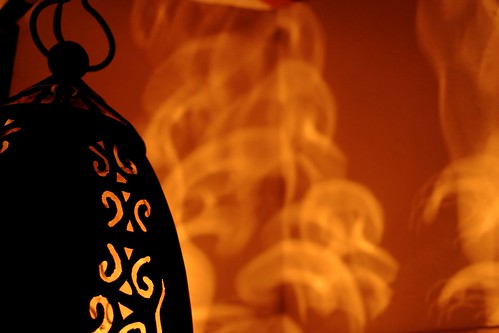
Canon EOS 350D, 0.2s, f/4.5, 28mm, ISO 100
a filigree lamp in our room at the Nature Lodge, Joffreville, Diego Suarez (Antsarinana), NE Madagascar
Next on Day 2: Amber Mountain and the city of Diego Suarez






6 comments:
Incredible series (photos and descriptions) Farl. Madagascar has always been a dream destination for me, since reading about lemurs a looong time ago.
First time on your blog, and I'm looking forward to reading through the older journeys...
I'm with david. I found this while googling for photos of the harbor at diego suarez. Your photos are great! Can you please go back and take one of the harbor? (just kidding) Thank you for sharing and giving me a glimpse of a trip I will most likely never take.
actually, i think i found the photo -- is it the Bay of Antsiranana photo? Seems like it could be.
david, linda- thanks for the comments.
yes, I wish I can go back and take more harbor photos. the one I had in this post only shows part of the bay. there is a wide part near the city which was picturesque but I simply ran out of time.
I don't know what to say of Diego.. it was undoubtedly the best vacation I every had too. I loved the moment I spent there. My 25 days in Madagascar were something I have never gotten with all my travel that I have gone through in South America, North America, France, Spain, Germany, England/Scotland/Wales, Australia, Singapore, Thailand, Indonesia.. none of the places have been as exciting and cool as Madagascar.
Montagne d’Ambre National Park is a forested volcanic massif in northern Madagascar.Montagne d’Ambre National Park protects 18,200ha of mid-altitude montane rainforest lying at altitudes ranging from 850 – 1475 metres.It is remarkable for its bird’s nest ferns, tree ferns and orchids; and the extremely rare and localised 'Rainforest' baobab, Adansonia perrieri, is particularly noteworthy.
d’ambre national park
Post a Comment